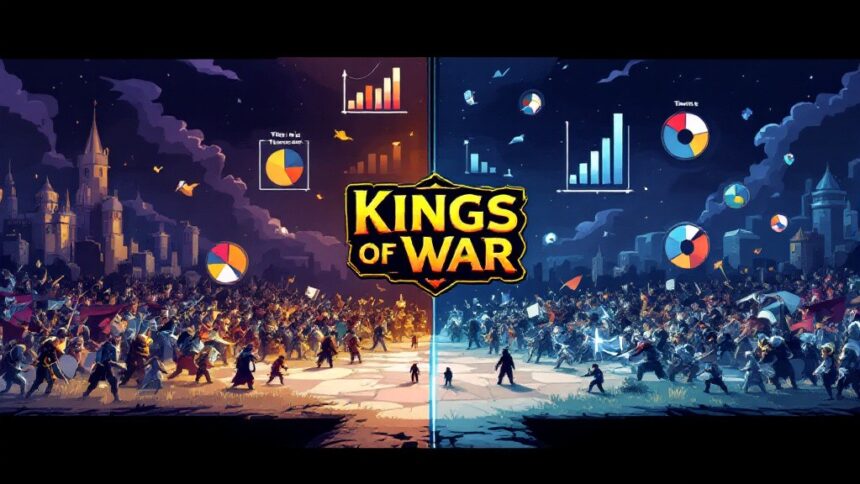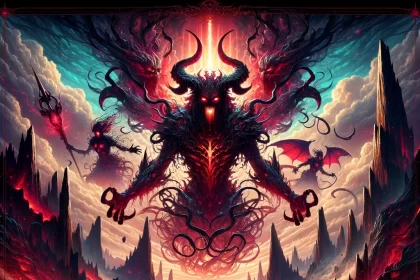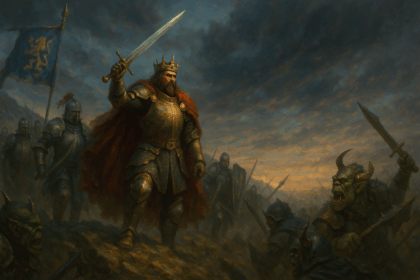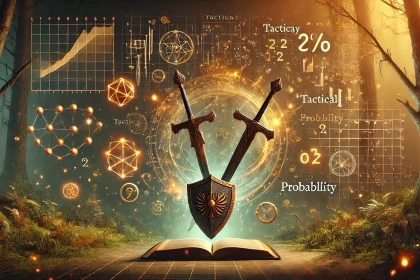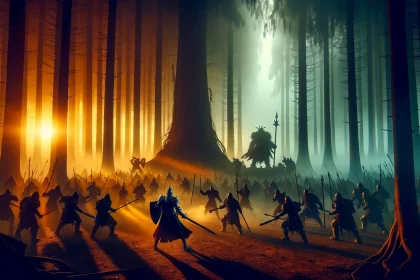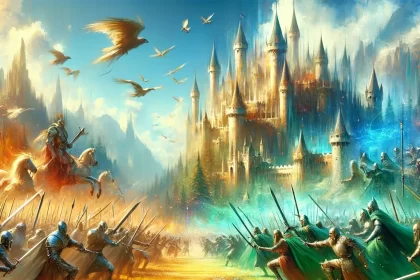On the KoW forum, TastyBagel of Regnum Aeternum posed an interesting question: Are theme lists less popular than main (master) lists? As someone who runs Varangur and The Herd—both theme lists—he noted how these armies tend to get less attention than their respective main lists and wondered how this phenomenon plays out across other armies.
In this blog post, I’ll take a look at data from 10 recent Kings of War tournaments (on the Mantic Companion) to explore this question. Whether you’re a data enthusiast or just a curious player, this post aims to shed light on how often theme lists show up compared to their parent main lists and how they stack up in tournament popularity.
What Are Main and Theme Lists?
For context, main lists are standalone army lists, while theme lists are offshoots of those main armies with a few thematic tweaks. For example, the main Dwarf list has a theme variant known as Free Dwarfs, and the Orcs have their Riftforged Orcs counterpart. While theme lists often have a narrower appeal, they offer rich narrative elements or unique play styles.
Data at a Glance: Main Lists Dominate, But Theme Lists Are Present
I analyzed the tournament data from 10 recent Kings of War events hosted on the Mantic Companion platform. The dataset includes 28 army lists, split into two categories: main lists and theme lists.
- Main lists were used 242 times, making up 86.1% of all lists taken.
- Theme lists were used 39 times, accounting for just 13.9% of the total.
This baseline suggests that while theme lists are less common, they still have a notable presence on the competitive scene.
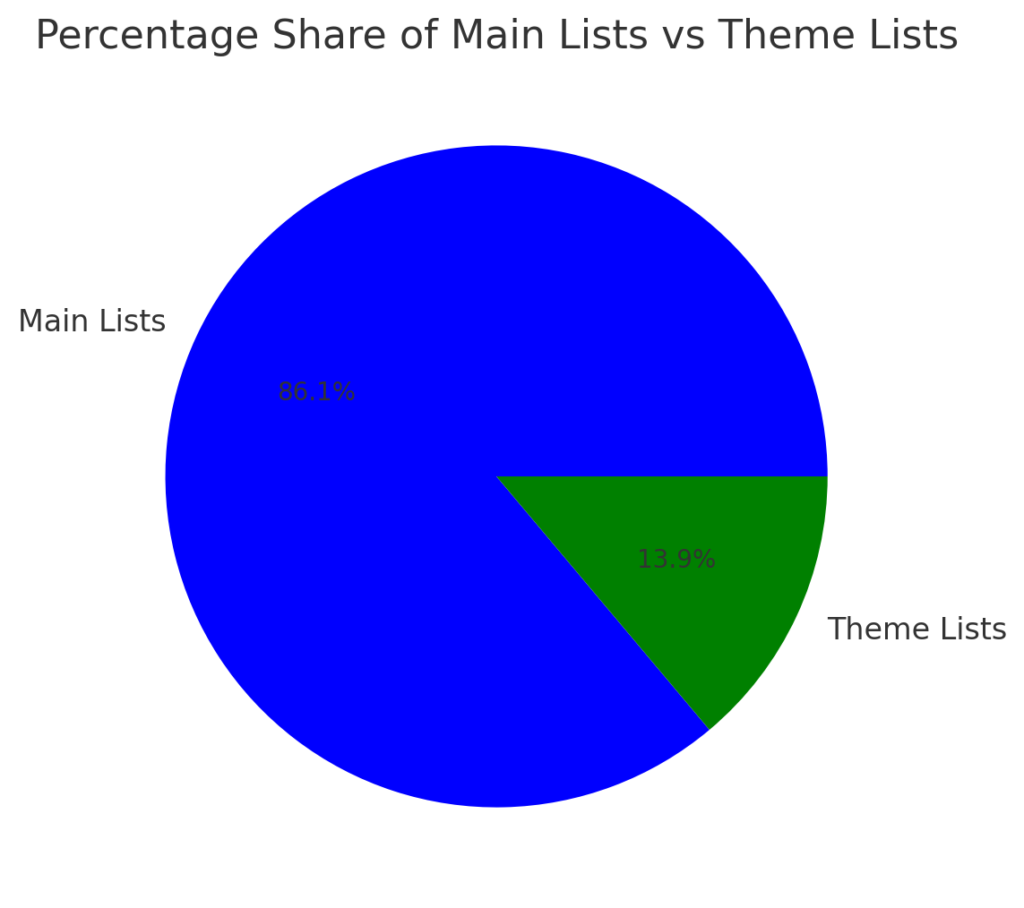
Why Are Theme Lists Less Popular?
At first glance, it might seem like theme lists are simply underused. But there’s more to the story. When I look at the proportion of available lists:
- 71.4% of the lists available in the game are main lists.
- 28.6% are theme lists.
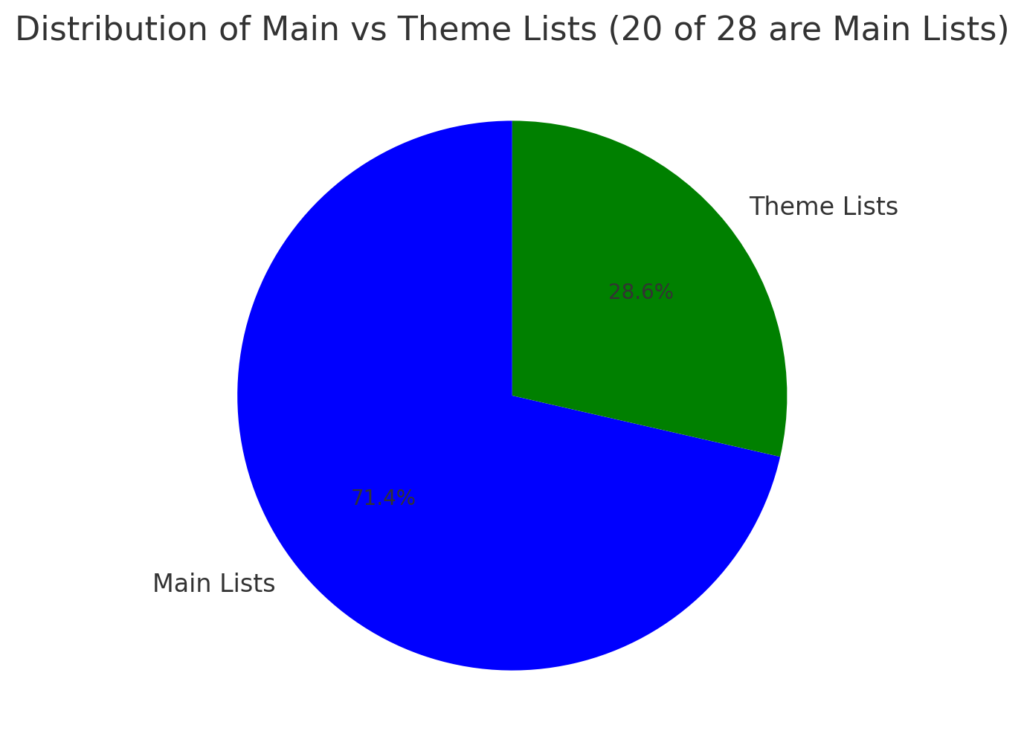
This difference provides a useful baseline for evaluating the tournament data. While 71% of the available lists are main lists, they account for 86% of the usage. This indicates that main lists are over-represented in tournament play compared to their availability, while theme lists, though present, are used less frequently than one might expect based purely on their presence in the game.
Main Lists vs Theme Lists: A Pairwise Breakdown
To get a clearer picture of how theme lists stack up against their associated main lists, let’s compare pairs of armies that involve both a main and theme list:
| Main List | Usage | Theme List | Usage |
|---|---|---|---|
| Orcs | 3 | Riftforged Orcs | 8 |
| Dwarfs | 20 | Free Dwarfs | 7 |
| Elves | 6 | Sylvan Kin | 5 |
| Basileans | 9 | Order of the Brothermark | 5 |
| Forces of Nature | 8 | The Herd | 7 |
| Forces of Nature | 8 | Order of the Green Lady | 4 |
| Northern Alliance | 16 | Varangur | 2 |
| Abyssal Dwarfs | 14 | Ratkin Slaves | 1 |
While in certain cases, the theme list (e.g., Riftforged Orcs) can actually outshine or come close to its main list counterpart, in most instances, main lists dominate the scene, as seen with Dwarfs and Northern Alliance. This may be because, as TastyBagel suggested, the theme lists have fewer unit options or less support from a modeling perspective, even if they might offer a fun lore-driven alternative to the main list.
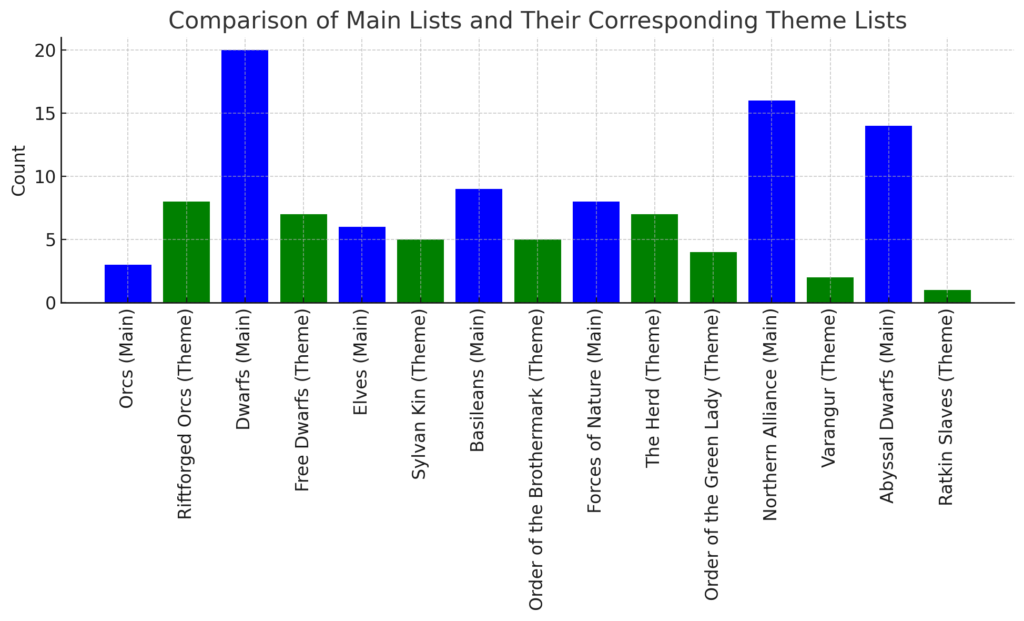
Key Observations
- Theme Lists Aren’t Universally Underused: Some theme lists, like Riftforged Orcs, are quite popular, even more so than their parent list. I suspect this has something to do both with RFO being a new, fun list and the support they had in the Mantic Vault.
- Main Lists Still Lead: Overall, main lists are more common, particularly in high-competition environments. Their reliability and adaptability likely make them a safer choice for tournaments. I wish we had data from garage games to see if that trend still held there, but it’s certainly true in the sample of tournaments that I parsed.
- Niche Popularity: Certain theme lists, such as Varangur and Ratkin Slaves, see very limited use, reflecting perhaps their more niche appeal compared to broader, more versatile main lists like Northern Alliance and Abyssal Dwarfs. A year ago, Varangur seemed much more popular, and it isn’t clear to me what could result in changing that popularity so dramatically.
Community Insight: A Closer Look at Main vs Theme Lists
The data highlights a clear preference for main lists over theme lists, but as pointed out by forum contributors DarkBlack and Sceleris, this is only part of the story. There are deeper, less quantifiable factors at play that influence how and why certain lists rise in popularity while others lag behind. Elements such as faction legacy, model availability, and the competitive effectiveness of the rules help to explain the dynamics between main and theme lists.
Legacy and Dedication
A key point raised by both DarkBlack and Sceleris is the idea of general dedication—a long-standing attachment to certain factions that transcends their current standing in the game. Dwarfs are a prime example. Their core identity resonates with players, perhaps rooted in broader fantasy archetypes. As DarkBlack noted, the feeling of playing Dwarfs—their solid, defensive playstyle—fits with the expectations of what a dwarf army should be. This attachment is not as evident in the Free Dwarfs, where the thematic twist of a more mobile, pathfinder-oriented playstyle does not appeal as broadly. The Free Dwarfs, while offering variety, seem to lack the gravitas that has kept the main Dwarfs list in such high demand.
Similarly, Orcs have a strong following across many fantasy settings, and this dedication has carried over into Kings of War. However, as both DarkBlack and Sceleris observed, Riftforged Orcs are rapidly becoming a more attractive option. In this case, Riftforged Orcs might be seen as a concept replacement, offering not only a fresh take on the Orc archetype but also better model availability and stronger competitive rules. These factors combine to push the Riftforged Orcs into prominence, even overshadowing the original Orc list.
Model Availability: A Decisive Factor
Sceleris emphasized the impact of model availability, and this observation is crucial to understanding why some theme lists, like Riftforged Orcs or Northern Alliance, are thriving. Northern Alliance, for instance, benefits from an almost complete range of Mantic models, while Varangur, their thematic cousin, is far less supported in terms of available sculpts. DarkBlack also alluded to this when discussing Varangur’s role as a legacy list—still viable but gradually eclipsed by the more supported Northern Alliance. The same pattern is seen with Riftforged Orcs, whose combination of newer models and enhanced rules has given them an edge over standard Orcs.
Model support, however, is not always a perfect predictor. As Sceleris pointed out, Ratkin Slaves have adequate model availability, but they still struggle in the meta. This may be due to the limited number of viable builds, as well as the fact that several prominent players who used to field Ratkin Slaves have moved on to other projects. It illustrates that while model availability is an important factor, it needs to be accompanied by strong, competitive rules to truly drive popularity.
The Importance of Rules and Competitive Play
Rules, of course, play a decisive role in the success of any list. DarkBlack noted that Riftforged Orcs not only benefit from new models but also from competitive rules that make them a strong option in tournaments. The combination of Mantic’s focus, new models, and well-balanced rules has made Riftforged Orcs a compelling choice, allowing them to compete with and in some cases surpass the traditional Orc list.
On the other hand, some lists struggle to match the competitive appeal of their main counterparts. For instance, Sceleris pointed out that Dwarfs maintain their strong position thanks to powerful builds centered on Defense 6 (De 6) and throwing mastiffs. The Free Dwarfs theme list, which relies more on scouting and pathfinder tactics, is less compelling in comparison, particularly when other armies can execute this playstyle more effectively.
Ratkin Slaves, similarly, have the models but lack the rules strength to justify their existence as a separate entity from Ratkin. Their role as a theme list, offering a twist on the main Ratkin playstyle, doesn’t seem strong enough to carve out a distinct place in the competitive meta.
The Role of Legacy Lists
Both DarkBlack and Sceleris touched on the idea of legacy lists—theme lists that serve as homes for older army concepts that are still supported but no longer actively developed by Mantic. The Herd and the Brotherhood of the Green Lady are prime examples. These lists offer players a way to continue using older armies, but their place in the competitive landscape is more about keeping legacy armies alive than offering something new or cutting-edge. The popularity of these lists tends to be niche, driven more by nostalgia or attachment to an old concept than by competitiveness or innovation.
Main Takeaways
- Model Availability and Rules Matter: It’s not just the existence of models but their quality and the competitive rules that accompany them. Factions like Northern Alliance and Riftforged Orcs have flourished thanks to newer, more complete model ranges and strong rules, while Varangur and Ratkin Slaves struggle despite having some model support.
- General Dedication to Classic Archetypes: Factions like Dwarfs benefit from a broad and longstanding fantasy appeal, which makes them highly popular. However, their theme lists, such as Free Dwarfs, struggle to capture the same widespread appeal, even when they offer interesting variations on playstyle.
- Legacy Lists Fill Gaps, But Don’t Dominate: Some theme lists, like The Herd or Brothermark, serve to keep older concepts in the game. While they still have a role, they do not compete on the same level as the main lists or more innovative theme lists like Riftforged Orcs.
Final Thoughts: The Complex Interplay of Popularity Factors
While the data clearly shows a dominance of main lists over theme lists, these community insights highlight the nuanced reasons behind faction popularity. Model availability, general dedication to fantasy archetypes, competitive rules, and even nostalgia all play a part. As Mantic continues to expand its range and refine rules, it will be fascinating to watch how these factors shift the balance between main and theme lists in the future.
Happy wargaming!
Sources:
- Data compiled from 10 tournaments hosted on the Mantic Companion platform.
- Analysis based on usage statistics and list popularity across main and theme armies.
- For a good look at (somewhat dated) faction-specific lore, check out:

